The first time I made couscous was as a base for a lovely ratatouille recipe I whipped up right after I saw the famous animated movie Ratatouille.
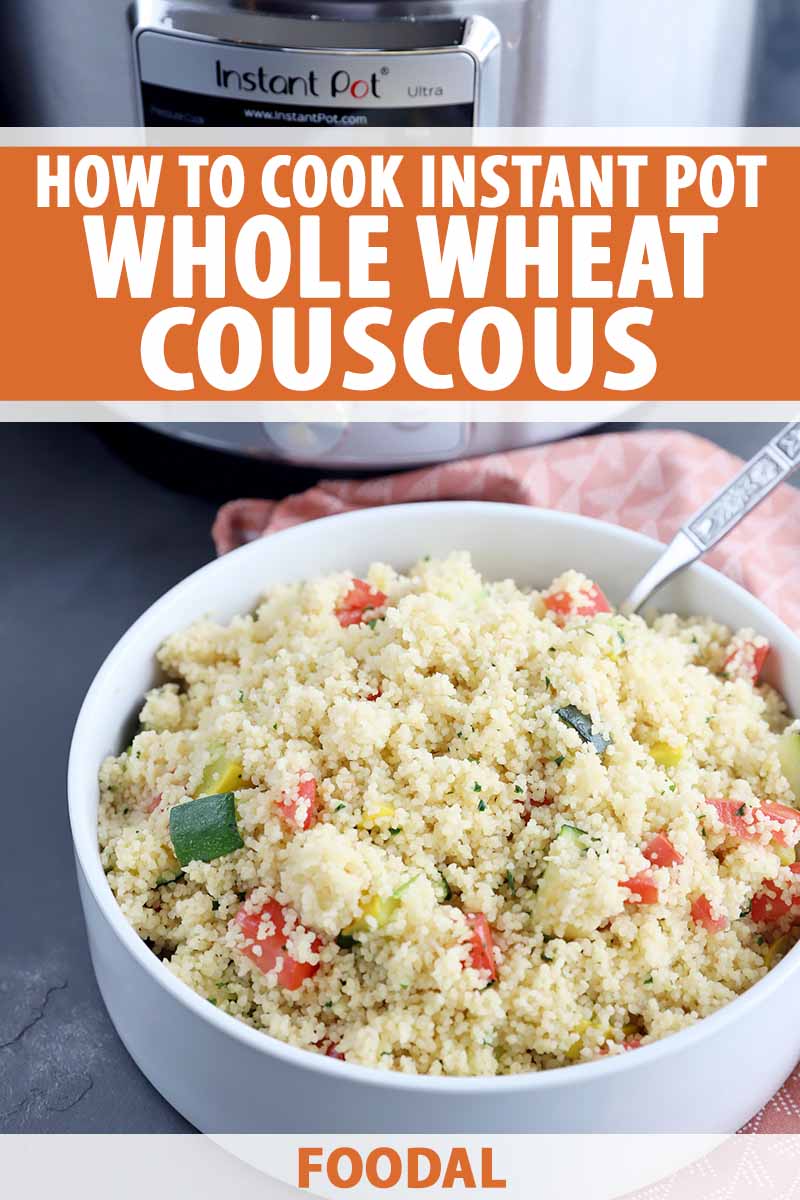
It’s still one of my favorite movies of all time. The way Remy talks about food? It speaks to my soul in such a real way, and I end up feeling like I’m starving every time I see it.
This is not a starch that I grew up with, so it was actually quite unfamiliar to me. Couscous is a tiny grain-like pasta that comes in a variety of types. Today, we are focusing on whole wheat.
When I am looking to incorporate more whole wheat into my diet, couscous may just be the easiest way. I find that the whole wheat option actually tastes better than regular, so it has become a new favorite of mine.
I like the fuller flavor of the whole wheat, especially when paired with the acid of tomatoes and other lighter vegetables.

This recipe is quick and easy, plus it cooks the pasta in such a way that you can turn it into whatever you want. It can be served as is of course, or you can get creative with it. Keep reading through to the end of this article for some of my favorite ideas.
There are two main types of the pasta that you will easily find in stores – Moroccan (also called instant) and Israeli or pearl. The latter type is bigger and takes a little bit longer to cook. But don’t worry, we are talking mere minutes here.
Both types are delicious and come out perfectly every time – all you have to do is note the different cook times in the instructions.
Here’s everything we’ll cover in this article:
What You’ll Learn
Serving Ideas
This pasta makes for a quick and easy side dish by itself, but you can make it even more delicious by incorporating other ingredients into the mix.
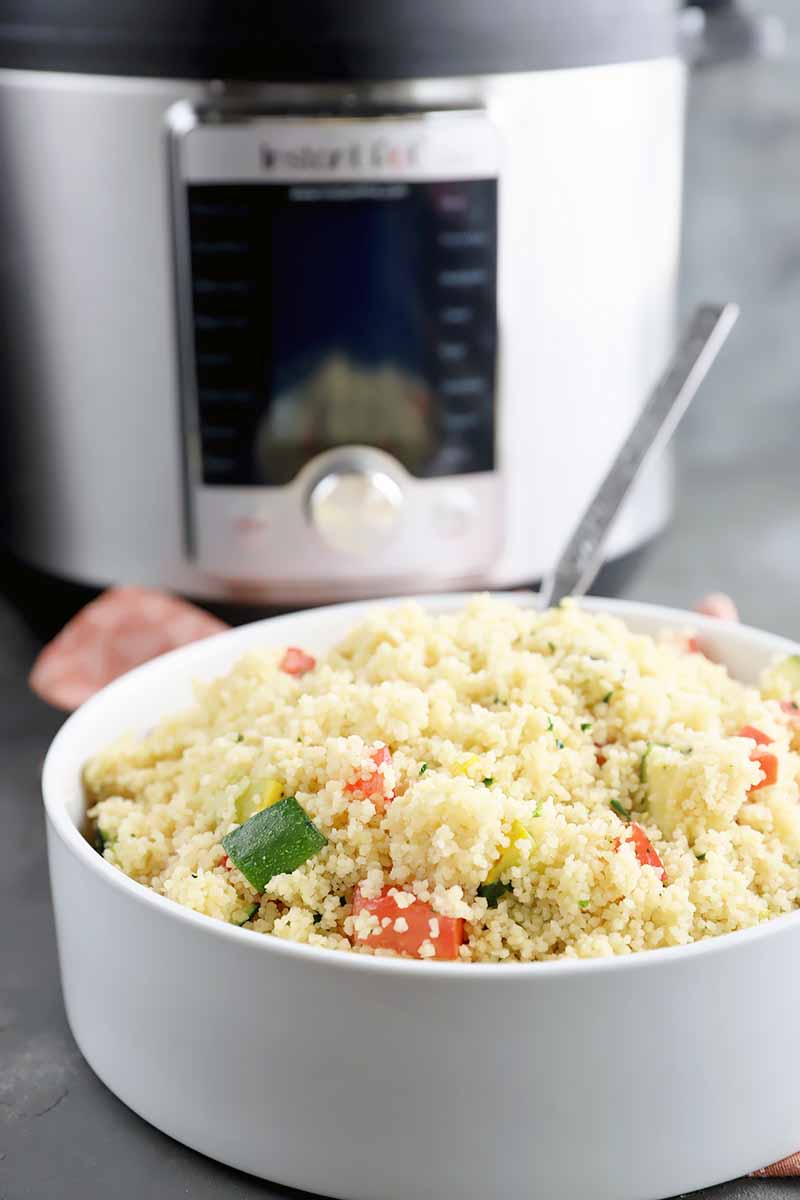
You can use different spice combinations, add a little acid, or use it wherever you might use other types of pasta in recipes.
Here are my favorite suggestions for serving this whole wheat carbohydrate, either as a side dish or the base of a main dish:
- Stir in your leftovers. You can add cooked chopped meat and/or vegetables like chicken, steak, bell peppers, carrots, onion, celery, and more.
- Flavor it with your favorite fresh herbs like basil, thyme, rosemary, or oregano.
- Brighten things up with a dash of lemon or lime juice.
- Use whole wheat couscous as the base of a grain bowl, piling your favorite protein and vegetables on top.
- It can easily be used wherever you might use rice. For example, try it as the base for homemade burrito bowls or fried rice.
- Incorporate it into a cold salad with fresh leafy greens and dressing, and top with roasted salmon.
- Make it with chicken or vegetable broth instead of water, for a more flavorful option.
- Stir into stews and soups to make them heartier, perfect for the colder months of the year.
- Simply serve it as a side dish, with protein and vegetables to complete your meal.
In the photos here, you can see that I’ve added fresh tomatoes, and cooked zucchini and squash.
If I had to pick a favorite option, I think it would be to use this tiny pasta as a replacement for rice. If you’re looking for something a little different, the texture and flavor are unique, and the pieces are a little bigger than quinoa.
Can I Use Instant?
Cooking instant is the same as cooking Moroccan couscous in the electric pressure cooker. The biggest change you’ll need to make is adjusting the cooking time, when compared to preparing Israeli or pearl.
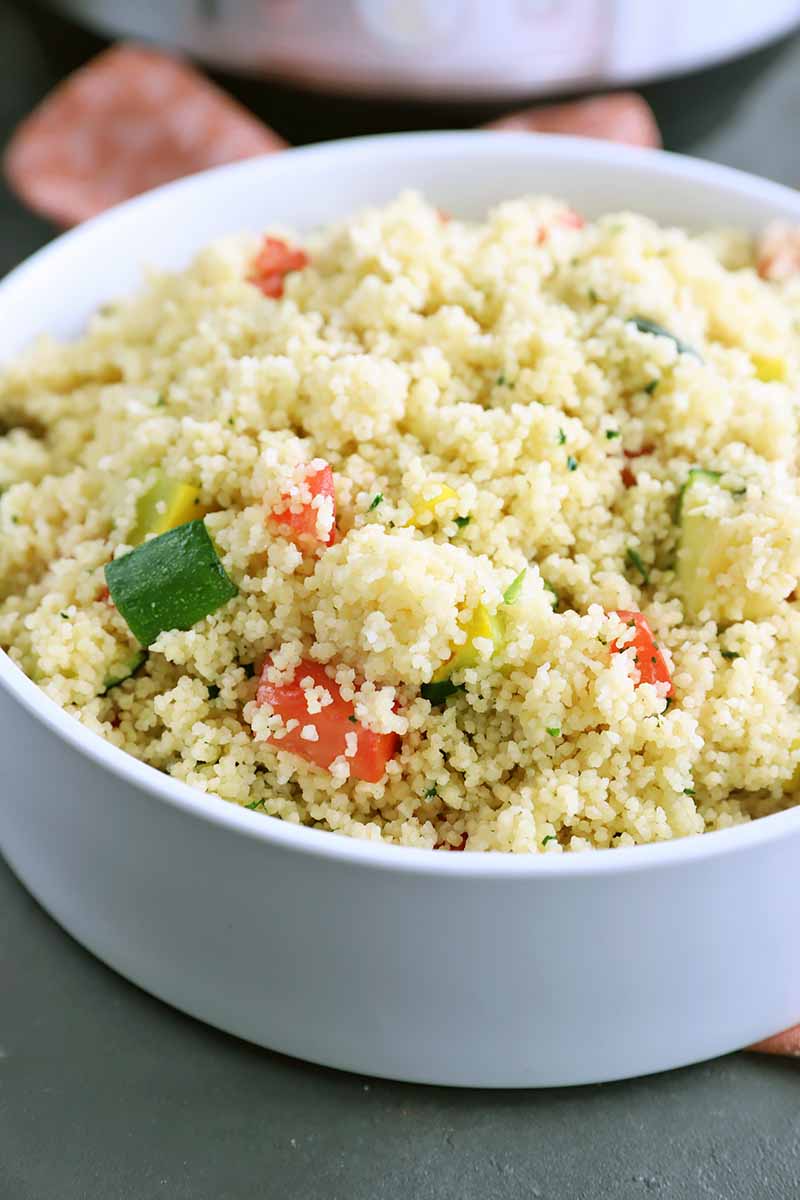
Simply adjust the total cook time to zero minutes if you are making instant, and it will come out perfectly cooked.
How to Cook Whole Wheat Couscous in the Electric Pressure Cooker
Whole wheat couscous comes together so quickly in the electric pressure cooker, saving you time and livening up your weeknight dinner routine.
Step 1 – Measure Ingredients
First, gather all of your ingredients. You will need:
- 2 tablespoons unsalted butter
- 2 cups whole wheat couscous (Moroccan or Israeli/pearl)
- 1 teaspoon salt
- 2 1/2 cups water
Measure out the ingredients as listed.
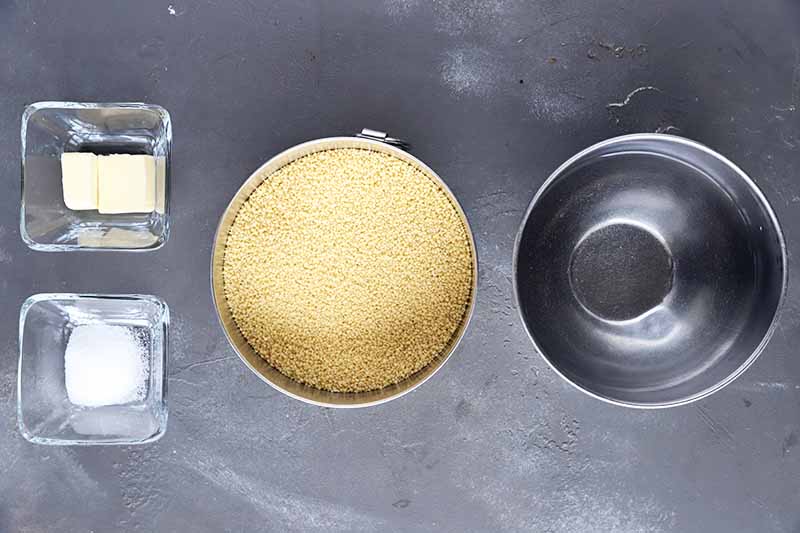
Set the electric pressure cooker to the Saute function. Once it’s hot, add the butter and allow it to melt.
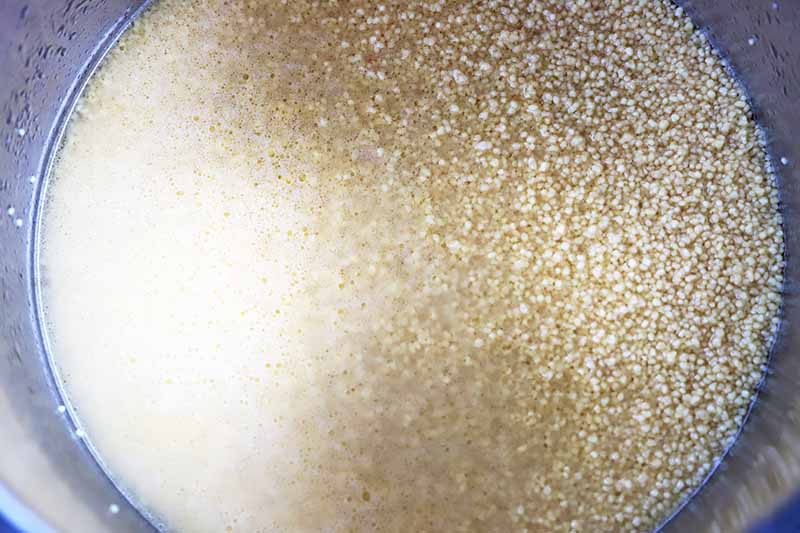
Stir in the pasta, salt, and water. Turn the cooker off.
Step 2 – Pressure Cook
Turn on the Manual setting and cook on High.

For Moroccan (also known as instant), set the cook time for 0 minutes. For Israeli or pearl, set the timer for 5 minutes.
Manually release the pressure as soon as it is done cooking. Remove the lid as soon as the pressure has been released, and fluff with a fork. Serve however you like.
Can I Make Couscous to Use for Meal Prep?
Including it in my meal prep menu for the week is one of my favorite ways to use whole wheat couscous prepared in the electric pressure cooker. It’s such an easy way to prep a side for your lunches throughout the week, or to have already made and ready to go for a weeknight meal.
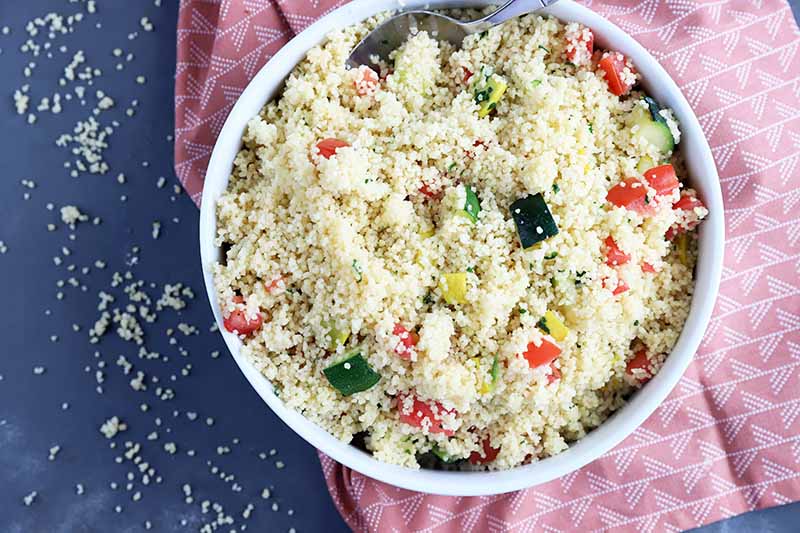
To store it, cool it down completely and store in an airtight container for up to three days in the refrigerator. You can eat it cold or reheat it in the microwave.
Want to know how to cook other types of pasta in the electric pressure cooker? Give these helpful how-to’s from Foodal a read next:
- How to Cook Elbow Macaroni in the Electric Pressure Cooker
- How to Cook Spaghetti in the Electric Pressure Cooker
- How to Cook Orzo in the Electric Pressure Cooker
Do you prefer the small Moroccan or the larger Israeli type of this style of miniature pasta? Tell us in the comments below.
Photos by Meghan Yager, © Ask the Experts, LLC. ALL RIGHTS RESERVED. See our TOS for more details.
About Meghan Yager
Meghan Yager is a food addict turned food and travel writer with a love for creating uncomplicated, gourmet recipes and devouring anything the world serves up. As the author of the food and travel blog Cake 'n Knife, Meghan focuses on unique foodie experiences from around the world to right at home in your own kitchen.

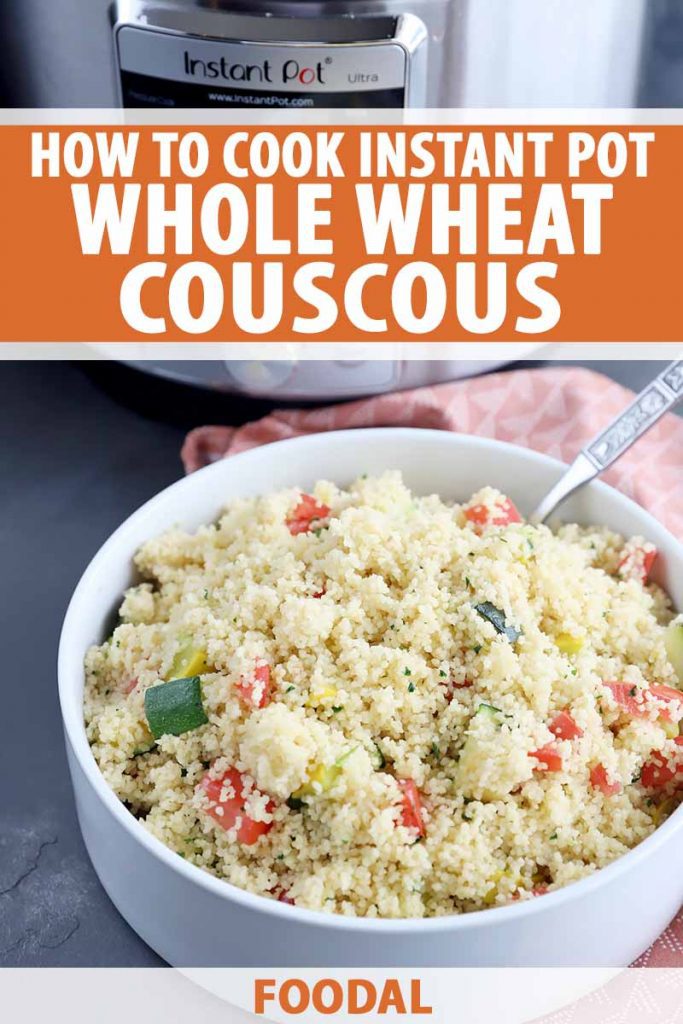

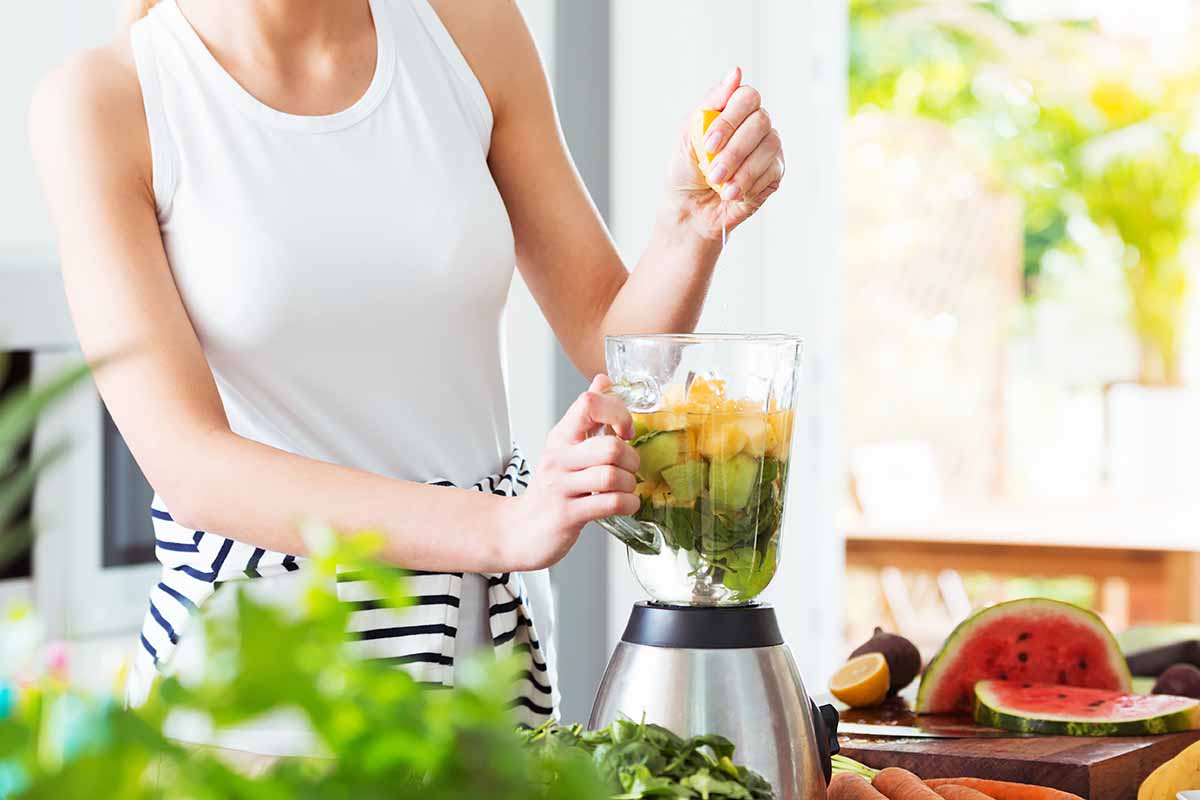

Was very excited to see the directions to cook whole wheat instant couscous. I didn’t really need to cook 2 cups so I cut it in 1/2 and got the dreaded burn notice before the post was sealed. Good news, turned pot off, waited 1 minute, and perfectly cooked. Advice would be to not 1/2 the recipe. Thanks for the instructions.
I bought some Israeli whole wheat pearl couscous (Gefen brand) and tried it. Awful stuff! Direction say to “fluff” it after it’s cooked. It was like trying to “fluff” rabbit pellets. Large, very dense, brown, chewy, sticky pellets. I tried returning it to the pot with some additional water and cooking an additional six minutes. Didn’t help. From your photos I was surprised these were even whole wheat – much lighter than the Gefen rabbit pellets, and look fluffy like couscous should.
Sorry to hear it, Butch! Israeli couscous is much larger than what’s pictured here. When you say you tried it and you returned it to the pot with more water for 6 more minutes, did you follow our directions for cooking in an electric pressure cooker, or did you cook it on the stovetop? Setting an electric pressure cooker for 6 minutes means it needs to come to pressure first before the timer will begin, and cooking for that long probably won’t turn out the best results.
Some brands are pre-steamed or they may call for different quantities of water to prepare from one brand to the next, and it’s important to set the pot aside off heat with the lid on for about 5 minutes after simmering to finish cooking if you are preparing it in a pot on the stove. But unfortunately your solution is actually the opposite of what you’d need to prevent sticky couscous! This is a type of pasta, and stickiness is often an indication that you’ve used too much water to cook it. Whole wheat pasta does absorb quite a bit more water than that made with refined white flour, but it’s still possible to use too much unfortunately.
Gefen’s whole wheat product calls for toasting in oil before adding boiling water and then simmering with the lid on for about 8 minutes if prepared on the stovetop, followed by setting the pot aside to steam for about 5 minutes before fluffing and serving.